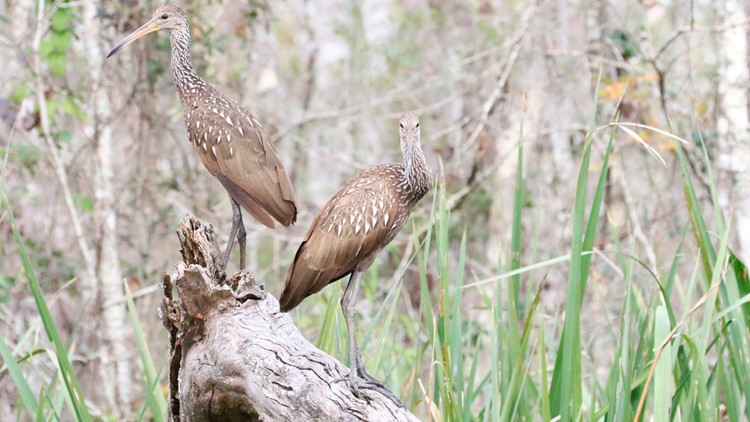HOUMA, La. — Invasive apple snails may have attracted a South American bird known to live in only two U.S. states to settle in Louisiana as well.
The state's first limpkin census has begun and is expected to last through July, The Courier reports.
Limpkins are long-legged, brown and white wading birds with downcurved beaks that often are twisted a bit to the right at the tip — something that may help them winkle the big snails out of their shells, according to the Audubon Society.
“They often leave telltale piles of snail shells at the edges of freshwater wetlands where hunting is good,” according to the Cornell Lab of Ornithology.
Limpkins are widespread in South America and also found in Central America. In the U.S., they're found only in Florida — where there's a native apple snail species as well as several invasive relatives — and southern Georgia, according to the Florida Fish and Wildlife Conservation Commission.
But Delaina LeBlanc, migratory bird coordinator with the Barataria-Terrebonne National Estuary Program, said she saw dozens during the 2021 Christmas bird count.
"We were barely in the water from the boat launch and had I think 35 in one spot,” she said. “So I’m going to be really curious about what we learn in the different navigation places we’re going to be going.”
She wanted a census last year, but the pandemic pushed it back. This year, two Nicholls State University graduate students started looking and counting with her.
Louisiana's first reported limpkin spotting was in 2017 at Lake Boeuf near Thibodaux. Since then, other sightings suggest its numbers are growing in southern Louisiana, the newspaper reported.
Nesting limpkins have been spotted in Terrebonne Parish since 2018, the Louisiana Department of Wildlife and Fisheries reported last year.
Early European settlers thought the bird seemed to limp, “perhaps when pursued by hunters with dogs," the Cornell birding website notes. "At such times, the usually stolid bird gallops away at unexpectedly high speeds.”
The Louisiana count started June 15, with Leblanc, Shasta Kamara and Casey Greufe making 11 stops along Bayou Chevreuil and 11 more along Grand Bayou to document limpkin and snail evidence.
At each stop they shut the boat down for about five minutes, then played a recording of what the Audubon Society describes as the bird's “piercing banshee wails.”
They saw about a dozen limpkins, and heard about 20 to 25 more. They are conducting 15 total counts across St. Mary, Lafourche, and Terrebonne parishes.
“They are very loud, they’re showy, they’re not really too worried about people,” Greufe said.
“I don’t know how it found its way here,” said LeBlanc.
The giant or channeled apple snail is also from South America. It's a global pest in rice but has done more damage in Louisiana to crawfish, which often are double-cropped in rice paddies, according to the LSU AgCenter.
In some fields, adult snails eat crawfish bait and clog trap entrances, AgCenter pest management specialist Blake Wilson said last year.
The snails, probably dumped from aquariums, were first reported outdoors in Louisiana in 2006.
But limpkins probably won't significantly dent the apple snail population, LeBlanc and Greufe said.
Snail reproduction probably will outpace limpkin appetite, Greufe said: “There are just too many snails, that’s just kind of a whole mess.”



